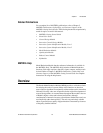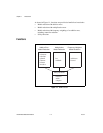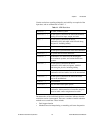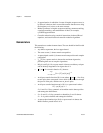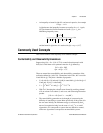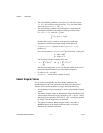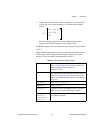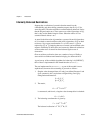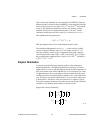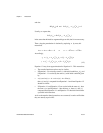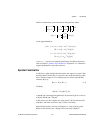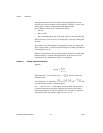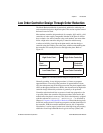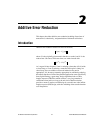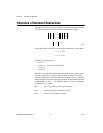
Chapter 1 Introduction
© National Instruments Corporation 1-11 Xmath Model Reduction Module
This is almost the algorithm set out in Section II of [LHPW87]. The one
difference (and it is minor) is that in [LHPW87], lower triangular Cholesky
factors of P and Q are used, in place of U
c
S
c
1/2
and U
O
S
O
1/2
in forming H
in step 2. The grammians themselves need never be formed, as these
Cholesky factors can be computed directly from A, B, and C in both
continuous and discrete time; this, however, is not done in
balmoore.
The algorithm has the property that:
Thus the diagonal entries of S
H
are the Hankel singular values.
The algorithm implemented in
balance( ) is older, refer to [Lau80].
A lower triangular Cholesky factor L
c
of P is found, so that L
c
L
c
′ = P.
Then the symmetric matrix L
c
′QL
c
is diagonalized (through a singular
value decomposition), thus L′
c
QL
c
= VRU′, with actually V = U. Finally,
the coordinate basis transformation is given by T = L
c
VR
–1/4
, resulting in
T′QT = T
–1
P(T
–1
)′ = R
1/2
.
Singular Perturbation
A common procedure for approximating systems is the technique of
Singular Perturbation. The underlying heuristic reasoning is as follows.
Suppose there is a system with the property that the unforced responses of
the system contain some modes which decay to zero extremely fast. Then
an approximation to the system behavior may be attained by setting state
variable derivatives associated with these modes to zero, even in the forced
case. The phrase “associated with the modes” is loose: exactly what occurs
is shown below. The phrase “even in the forced case” captures a logical
flaw in the argument: smallness in the unforced case associated with initial
conditions is not identical with smallness in the forced case.
Suppose the system is defined by:
(1-1)
T′QT′ T
1–
PT
1–
()′S
H
==
x
·
1
x
·
2
A
11
A
12
A
21
A
22
x
1
x
2
B
1
B
2
u+=
y
C
1
C
2
x
1
x
2
Du+=



